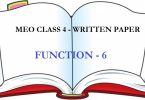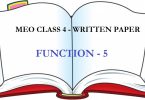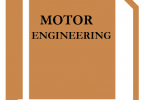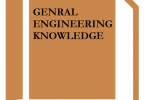Section – 2
- Between the side frames of a Vessel, support for the deck beams is provided by _________________.
- stanchions
- brackets
- web frames
- deck stringers
ANS.: A
- For Vessel’s operating under the Indian flag, the construction portfolio must contain _____________.
- detailed construction plans
- chemical and physical properties of Classification Society approved steels
- approved welding procedures and welding test procedures
- loading conditions and limitations
ANS.: C
- Prior to the burning or welding of a fuel tank on a Vessel, regulations require that an inspection be made. An entry in the official logbook is required if this inspection is made by ______________.
- A marine chemist
- The Surveyor from MMD
- The Master in charge of the Vessel
- The inspector from the department of explosive
- A marine biologist
ANS.: D
- A welding procedure used for joining dissimilar metals used in the construction of a Vessel would be recorded in the
- welding plan
- Classification Society specifications
- construction portfolio
- BIS Specifications
ANS.: 1,3
- According to SOLAS, a bulkhead capable of preventing the passage of smoke and flame for one hour would be classified as a/an ____________.
- A-60
- B-60
- C-60
- D-60
ANS.: A
- The average of the observed drafts is known as ____________.
- mean draft
- true mean draft
- mean of the calculated drafts
- draft at the center of flotation
ANS.: A
- When flooding occurs in a damaged vessel, reserve buoyancy ______________.
- decreases
- remains the same
- increases
- shifts to the low side
ANS.: A
- The vertical distance between “G” and “M” of a vessel is used as a measure of __________.
- stability at all angles of inclination
- initial stability
- stability at angles less than the limit of positive stability
- stability at angle less than the down flooding angle
ANS.: B
- The deck plating on a Vessel is supported primarily by deck longitudinals and deck ________________.
- girders
- stanchions
- frames
- beams
ANS.: D
- When the longitudinal strength members of a Vessel are continuous and closely spaced, the Vessel is ____________.
- transversely framed
- longitudinally framed
- intermittently framed
- web framed
ANS.: B
- A Vessel having continuous closely spaced transverse strength members is _____________.
- longitudinally framed
- transversely framed
- cellular framed
- web framed
ANS.: B
- On a Vessel, the deck stringer is the outboard most deck ________________.
- plating
- beam
- stiffener
- stanchion
ANS.: A
- Reserve buoyancy is the _____________.
- unoccupied space below the waterline
- volume of intact space above the waterline
- excess of the buoyant force over gravitational force
- difference between buoyancy in salt and fresh waters
ANS.: B
14. You can generally improve the vessel’s stability in a hazardous situation by _______________.
- pumping double bottoms to the forepeak
- ballasting deep tanks
- transferring ballast athwartships
- deballasting double bottoms
ANS.: B
15. Which of the following conditions will occur to the ship’s center of gravity if 200 tons of steel is transferred to the ships cargo hold from shore side?
- The reserve buoyancy will rise.
- The center of gravity will remain in the same position.
- The center of gravity will be lowered.
- The reserve buoyancy will remain the same.
ANS.: C
16. If a vessel rolls to the starboard side, and there are no movable or moving weights onboard, the center of gravity will ____________.
- move to port
- move to starboard
- move directly down
- stay in the same position
ANS.: D
17. In the event of a collision, watertight integrity may be lost if _____________.
- the sounding tube cap from a damaged tank is missing
- the dogs on a manhole cover are secure
- you have recently replaced a gasket in a watertight door
- you operate the dewatering system from a flooded compartment
ANS.: A
18. The existence of liquids in partially full tanks or compartments of a Ship causes a virtual rise in the height of the _______________.
- metacenter
- center of buoyancy
- center of flotation
- center of gravity
ANS.: D
19. A load line for an Indian Ship is assigned by the ______________.
- Mercantile Marine Department
- Ministry of Shipping
- Directorate General of Shipping
- Not necessary a member of IACS
- None of the above
ANS.: D
20. Adding the transverse free surface correction to the uncorrected height of the center of gravity of a vessel yields ____________.
- “FSCT”
- “KG”
- “KGT”
- “GMT”
ANS.: C
21. The difference b/w the average of the forward and aft drafts is _____________.
- list
- heel
- trim
- flotation
ANS.: C
22. In the absence of external forces, adding weight to one side of a floating vessel, will cause the vessel to ____________.
- heel until the angle of loll is reached
- list until the center of buoyancy is aligned vertically with the center of gravity
- trim to the side opposite TCG until all moments are equal
- decrease draft at the center of flotation
ANS.: B
23. A vessel departed from point “A” at 1206 with a counter reading of 616729 and arrived at point “B” with a counter reading of 731929 at 1148 the following day. This vessel is equipped with a 630cm diameter propeller, with a pitch of 610cm. The observed distance of 404.16 nautical miles was covered at an observed speed of 16.85 knots. What should be the apparent slip for this trip?
- 1.04%
- 1.29%
- -6.65%
- -11.04%
ANS.: C
24. A continuous watertight bulkhead on a Vessel may also be a/an _____________.
- structural bulkhead
- exterior bulkhead
- centerline bulkhead
- joiner bulkhead
ANS.: A
25. Regarding Vessel construction, Partitions in the living quarters are generally __________.
- Structural bulkheads
- watertight
- non-structural bulkheads
- continuous bulkheads
ANS.: C
26. Vertical partitions providing strength and compartmentation on a Vessel are called _____________.
- decks
- bulkheads
- joiner work
- walls
ANS.: B
27. Bulkheads forming part of the tanks on a Vessel are stiffened to withstand _______________.
- deck loads from above
- dynamic forces while afloat
- hydrostatic pressure
- overpressurization
ANS.: C
28. The decks of a Vessel are supported by transverse members called _______________.
- trusses
- deck longitudinals
- deck beams
- web frames
ANS.: C
29. On a Vessel, the keel is the primary strength member of the lower hull form and is laid in which direction?
- Transverse
- Diagonal
- Longitudinal
- Vertical
ANS.: C
30. Compared to internal structural plating, the exterior hull plating on a Vessel is usually _____________.
- stronger
- thinner
- more corrosion resistant
- a lower grade steel
ANS.: A







An excellent initiative. Keep it updated with technology and regulations.